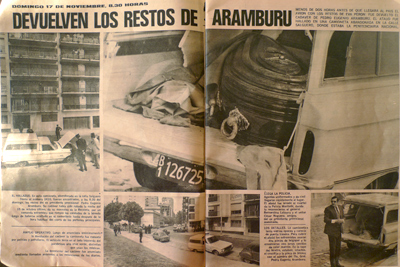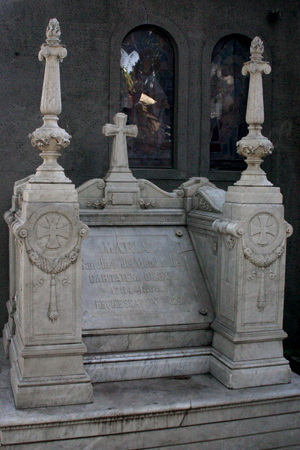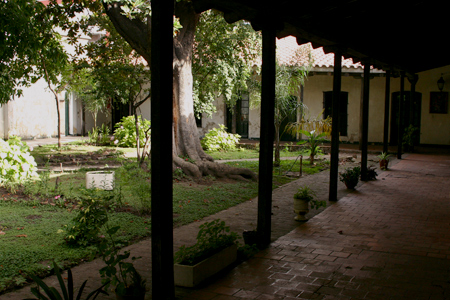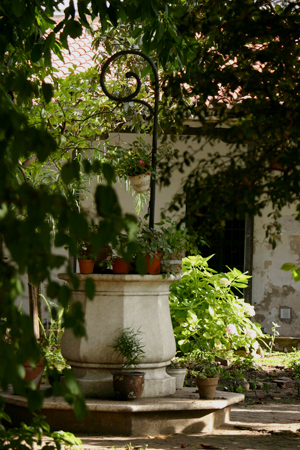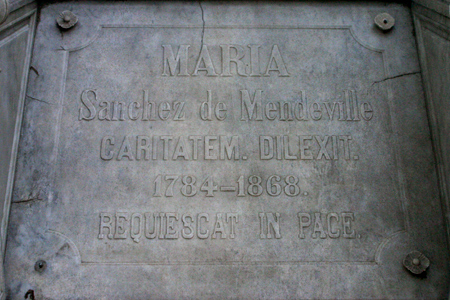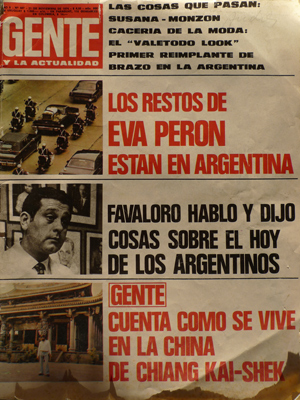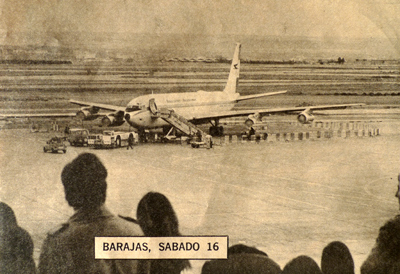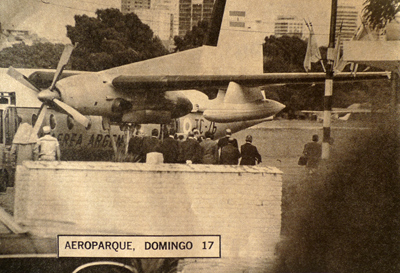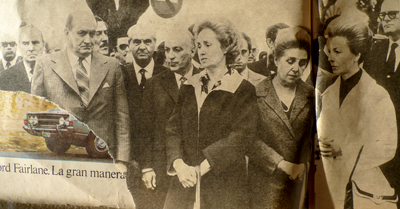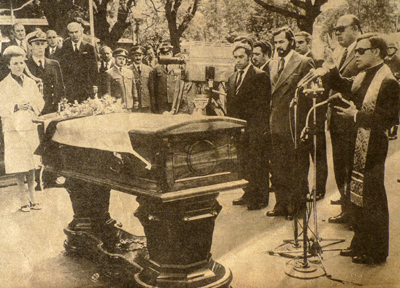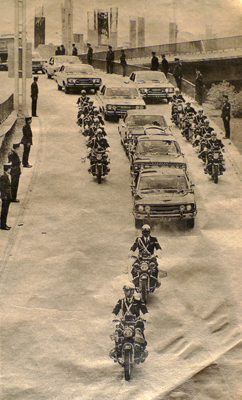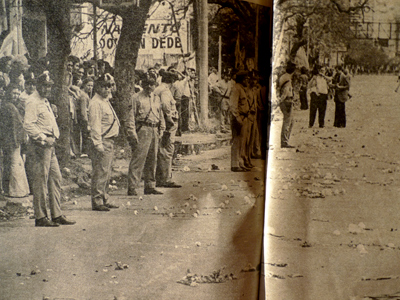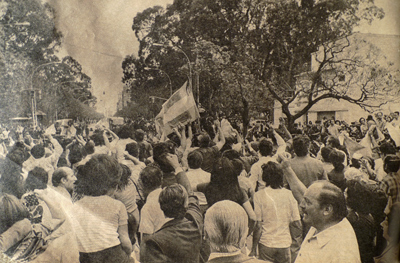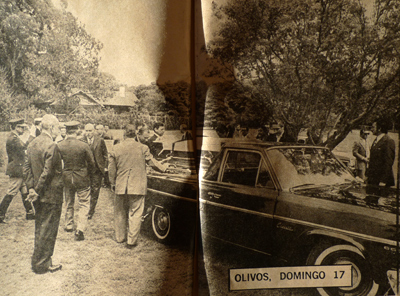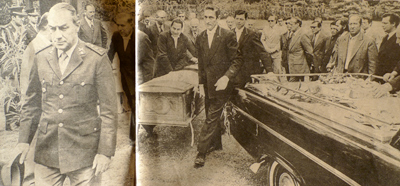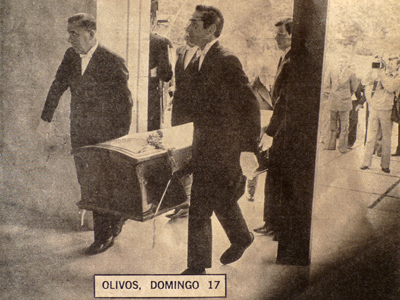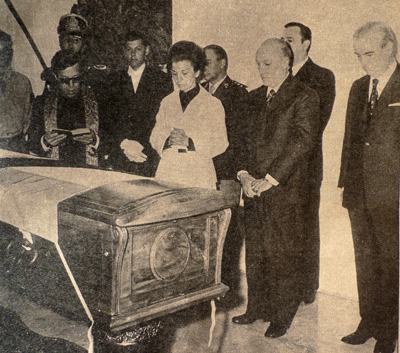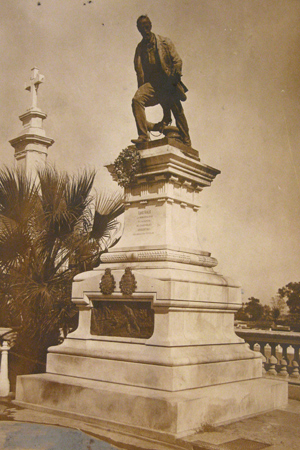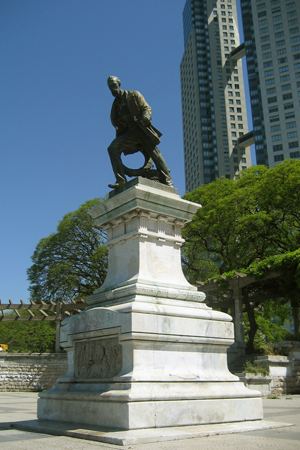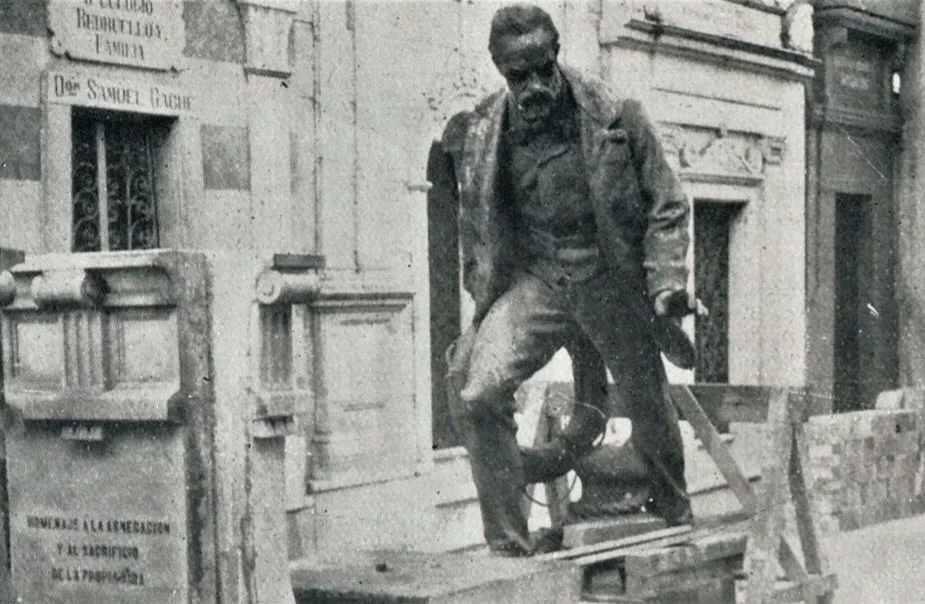The same issue of Gente magazine with the cover story “Los restos de Eva Perón están en Argentina” contained another surprise. Immediately following the Eva Perón article was a short photo essay entitled: “Devuelven los restos de Aramburu.” What luck!
Pedro Aramburu became de facto President of Argentina after a 1955 military coup ousted Perón. Aramburu was also behind the theft of Eva Perón’s embalmed corpse, her posthumous journey around Buenos Aires & her eventual burial in a Milan cemetery. Kidnapped & killed by the Montoneros (a pro-Perón paramilitary organization), Aramburu was buried in Recoleta Cemetery in 1970. Although Eva’s body was returned to Perón the following year, he did not bring her back to Argentina after his 1973 re-election… Eva remained in the former Perón residence in Madrid. The death of Perón in 1974 sparked the bizarre chain of events reported by Gente magazine.
The Montoneros presented an unresolved issue to Isabel Perón after she became President: they wanted Evita back in Argentina. To make sure their demands were heard, they broke into Recoleta Cemetery, broke through the bronze doors of Aramburu’s crypt & stole his casket. Isabel acquiesced & arranged for Eva to be brought back to Buenos Aires. Aramburu’s casket was returned to Recoleta Cemetery after being discovered in an abandoned truck, & his crypt was supposedly filled with concrete to prevent any possible desecration in the future. As of 2004, the damage inflicted by the Montoneros on Aramburu’s tomb could be easily seen… notice the broken hinge in the photo below. Don’t expect to see this today; it has since been repaired:
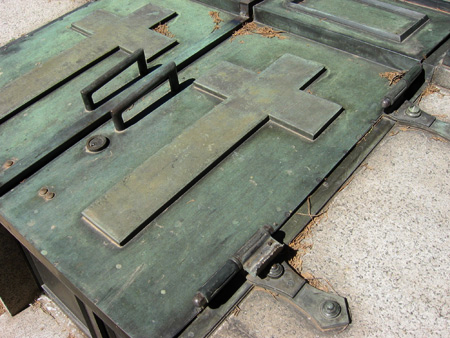
The article in Gente provides hard-to-find photographic evidence of the events described above. The police found Aramburu’s casket alongside Parque Las Heras in Palermo, & the location looks pretty much the same today as it did in 1974. Following is the complete text of the article with some comparison photos taken in July 2010.
————————————————
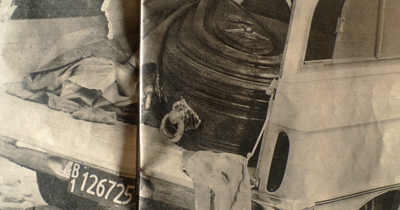
Less than two hours before the plane with the remains of Eva Perón would arrive in Argentina, the cadaver of Pedro Eugenio Aramburu was returned. The coffin was found in an abandoned pick-up truck on Salguero Street, where the National Penitentiary was once located.
The discovery. In this pick-up truck, abandoned in front of 2410 Salguero Street, at 08:30 on Sunday, the remains of the provisional ex-President Pedro Eugenio Aramburu were found. His cadaver had been stolen on the evening of October 15th from his mausoleum in Recoleta by an extremist group which broke the padlocks of his vault after having hidden inside the cemetery after the normal closing time of the main gates.
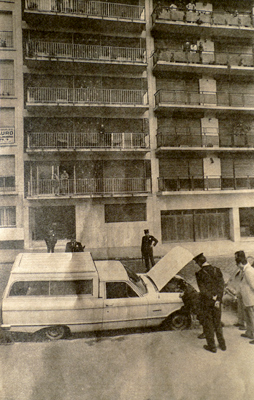
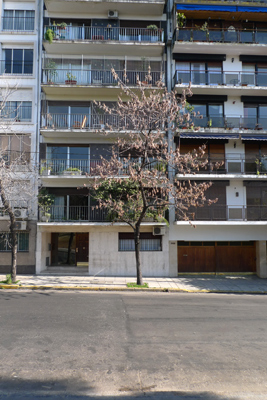
Amplio operativo. Luego de anunciada anónimamente la devolución del cadáver la camioneta fue rodeada por policías y patrulleros. El vehículo tenía en el lado izquierdo del parabrisas una cruz verde, distintivo que usan los médicos. La devolución del cadáver fue anunciada mediante llamados anónimos a las redacciones de los diarios.

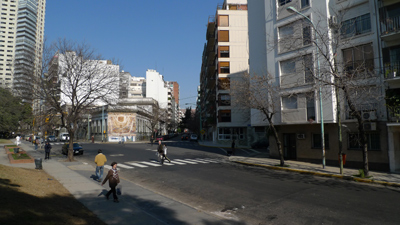
Arrival of the police. Uniformed & plainclothed agents arrived rapidly on the scene. The casket was taken to the Mounted Police headquarters, where Aramburu was identified by General Bernardino Labayru & Mr. César Noguera, friends of the assassinated provisional ex-President.
Details. The pick-up truck had shaded windows & lacked a tailgate. [Obviously a reporter’s mistake. See photo below.] To cover the casket, the extremists used two sheets of styrofoam and wrapped it with sheets of brown plastic sewn together. On the lid of the casket, intact, were the crucifix & bronze plaque with the name of Lieutenant General Pedro Eugenio Aramburu.

Remember: The complete story of Eva Perón’s postmortem journey can be found in the Recoleta Cemetery PDF.
1 Comment